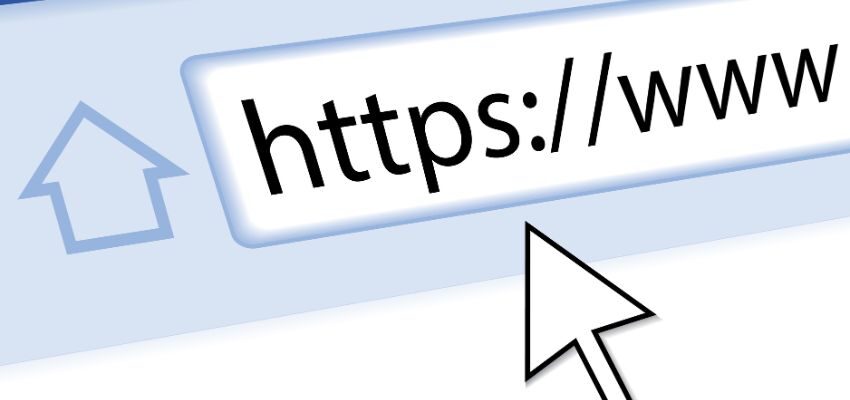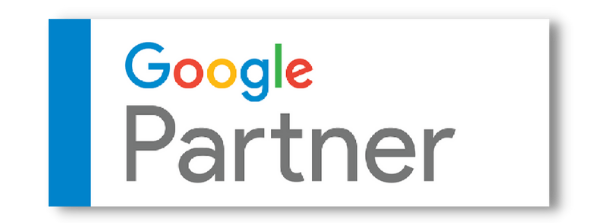Website Glossary: 50+ Most Common Terms You Should Know

Published January 12, 2024
Proficiency in the language of the Internet is essential in the digital realm. It serves as a guiding compass for every click. It’s a mastery that empowers users to navigate with finesse, ensuring a seamless and enriching online experience. Whether you’re a tech-savvy individual or a casual user, lacking an understanding of the fundamental website terminology is akin to navigating unexplored territory on a blindfold.
Imagine coming across terms like CMS, SEO, or SSL and feeling like they’re encoded messages in an unfamiliar language. Sadly, it can be an obstacle to your way to online proficiency. Fear not! In this article of website glossary, it’s your chance to get to know these terms. Embracing more than 50 crucial website terms helps you understand the online landscape. It also gives you the confidence to navigate, create, and explore the web.

Fundamental Website Elements
- Domain name. Among the website words you’ll find online, domain name is something you’ll encounter most often. It serves as the distinctive identifier for a website, enabling convenient access to web resources and services. A domain name generally consists of a name, such as “Google,” and a domain extension, such as “.com,” “.org,” and more. This combination allows seamless navigation and enhances the user experience.
- DNS (Domain Name System). DNS acts as the Internet’s phonebook, translating domain names to IP addresses. This helps navigate the web easily.
- Favicon. A small iconic image representing your site. You can often find one in the address bar of your web browser, but it can also be used in bookmark lists and feed aggregators.
- DPI (Dots-Per-Inch). It’s the measurement referring to image quality. Specifically, the number of dots forming the image present in a square inch. Generally, the larger the DPI, the higher the quality of an image.
- Web hosting. Web hosting is like renting physical space for website files. It ensures they’re accessible on the Internet. It involves storage, bandwidth, and server maintenance.
- URL (Uniform Resource Locator). More than just an address, a URL specifies the exact location of a web resource. It comprises various components, including the protocol (such as “https://”), domain name, and specific page or resource path.
- Homepage. The first point of contact welcomes users and serves as a gateway to explore other sections and content. It sets the tone and offers seamless navigation, inviting visitors to explore what a site offers.
- Browser. The software enables users to access and navigate the Internet. Popular browsers like Chrome, Firefox, Edge, and Safari have unique features. These features improve the browsing experience in their own ways.
- Error 404. If you’ve encountered an Error 404 before when checking out a page, it’s no longer on the server. It could mean the type URL is incorrect or the page no longer exists.
- IP (Internet Protocol) address. Each device connected to a network, including the Internet, is assigned a unique numerical label called an IP address. It allows communication between devices, enabling seamless connectivity.
- Server. A specialized computer or system that hosts and delivers web content to users upon request. It plays a crucial role in storing files, managing databases, and processing user requests. With its vital functions, a server ensures efficient delivery and web content accessibility.
- Subdomain. A subset of a larger domain provides a way to organize and structure a website. For example, “blog.example.com” is a subdomain of “example.com.”
- Registrar. Companies or entities that help individuals or organizations register domain names. They enable them to claim and own specific domain names on websites.
- HTML (Hypertext Markup Language). The language utilized by browsers to render information on a page. Generally, instructions to a web browser are in HTML form.
- Caching. A process on how browsers store data locally when visiting a site. It helps boost loading speed and minimizes pressure on servers.
- CSS (Cascading Style Sheets). Play a role in making your website look appealing. They work by defining elements such as font size, color, and style, along with the layout of web pages and animation.
- Cookies. Small amounts of data that allow your browser to remember static information. For example, it can include names, numbers, and email addresses. It’s most typically shown once your browser requests if you would like to use the “Autofill” feature.
- FPT (File Transfer Protocol). A set of rules that computers utilize in a network to communicate. It’s the language allowing the transfer of files from one computer to another.

Website Design And Structure
- UI (User interface). The point of interaction between a user and a website. It covers a range of elements, such as buttons, menus, and visual components that allow seamless user interaction.
- UX (User experience). Users’ impression of a website design depends on three factors: ease, efficiency, and emotional response. These are influenced by the site’s design and functionality.
- Responsive design. A design approach guarantees that a website works well on different devices. It also ensures it looks good on different screen sizes. This enhances user experience and accessibility.
- Navigation. The architecture of a website guides users through menus and links. It helps users find information and complete actions. The goal is to enhance user experience.
- Wireframe. A visual blueprint depicts a site’s layout and structure. It guides content placement and functionality before design implementation. It allows for careful planning to achieve desired goals and objectives.
- Template. Pre-designed layouts or structures serve as a foundation for creating websites. They ensure consistent design and efficient functionality.
- Whitespace. Empty spaces in a design enhance readability and focus. They also provide visual clarity to draw attention.
- JPG or JPEG. The most common format for online images. It boasts a compression algorithm, allowing smaller file sizes and faster loading times.
- CTA (Call To Action). Prompts or buttons on a website that encourage users to take action. These actions include making purchases, subscribing, or signing up. The CTAs guide and motivate users, driving them to desired conversions. The elements also encourage engagement.
- Above the fold. A web page displays content that users can see without scrolling. This content may include important information or elements that grab attention.
- Accessibility. A website should be usable and accessible to individuals with disabilities. To focus on accessibility, you can add screen reader compatibility and keyboard navigation.
- Sitemap. A list of pages of a website. Sitemaps can be graphical, HTML, or XML.

Content Management And Creation
- CMS (Content Management System). In a glossary website of common online terms, CMS is also another popular term. The software makes it easy to create, edit, and organize digital content. It also allows for publishing on sites without needing technical skills.
- SEO (Search Engine Optimization). Strategies and tactics that aim to improve a site’s visibility on SERPs. This is done through organic methods. SEO helps increase a site’s online presence and potential for success. If you work with a reputable provider of Search Engine Optimization services, it involves optimizing keywords, meta tags, and backlinks. This optimization attracts targeted organic traffic.
- Keywords. The content incorporates specific terms or phrases to attract targeted traffic. These terms are strategically integrated into the content for search engine optimization. You enhance the content by optimizing word choice, structure, and reliability.
- Blog. A dedicated section on a site where regularly updated articles, posts, or insights are published. It fosters engagement and attracts visitors. The platform is a valuable resource, providing information and fostering meaningful connections.
- Meta tags. HTML tags provide metadata about a webpage to search engines, influencing how a page is indexed and displayed in search results.
- ALT text. Images have descriptive text to aid visually impaired users. This descriptive text also helps with SEO by providing context to search engines.
- SERP (Search Engine Results Page). The page displays search engine results in response to a user’s query. SERPs showcase relevant web pages based on the algorithms used by the search engine.
- Backlink. An incoming link from one webpage to another is considered a measure of credibility and influences a site’s search engine ranking.
- White hat SEO. The practice of optimization tactics focused on human audience experience. White hat SEO is considered ethical SEO.
- Black hat SEO. Some tactics don’t benefit users and only aim to boost rankings. Black hat practices include keyword stuffing, blog spam, hidden links, duplicate content, and link farms.

Analytics And Performance
- Website analytics. Tools and software are utilized for gathering data on website traffic. The data is then analyzed and interpreted, focusing on user behavior and engagement metrics.
- Conversion rate. The percentage of visitors who execute a desired action, such as purchasing, signing up, or filling out a form. It serves as a crucial metric for measuring the effectiveness of a site in achieving its objectives.
- Bounce rate. The number of visitors who navigate away from a website after checking out only one page indicates a lack of further engagement.
- SEO audit. The site’s SEO performance is evaluated to identify strengths, weaknesses, and improvement opportunities.
- KPI (Key Performance Indicators). Specific metrics measure website success and performance against predefined objectives.
- Heatmap. The areas of a web page where users interact the most are shown visually. This helps understand user behavior and preferences.
- CTR (Click-Through Rate). The number of users who tap on a specific link compared to the total users who viewed it. It’s a commonly used metric for evaluating the efficacy of online advertising campaigns or particular web page elements.

E-Commerce And Transactions
- E-commerce. Commercial transactions that take place online. While most think of it as online shopping, it includes other activities such as online auctions or Internet banking.
- Shopping cart. Users can collect items in a virtual container for easy shopping. They can browse and select products before checking out.
- SSL (Secure Sockets Layer). An encryption protocol ensures secure and encrypted communication between a user’s browser and a website. It plays a crucial role in safeguarding sensitive data during transactions.
- Payment gateway. The service enables safe online transactions. It authorizes payments and ensures secure funds transfer. Customers and merchants can use it.
- Inventory management. In an online store, products are tracked and controlled systematically. The purpose is to ensure accurate stock levels and efficient fulfillment.
- Product description. An item for sale has detailed information, such as specifications and features. This information helps with purchasing decisions by providing dimensions and other relevant details.
- Abandoned cart. Users often add items to a shopping cart but don’t buy. This often leads to follow-up communication to encourage completion.
- Order fulfillment. The process starts with the placement of an order by the customer. It then involves various steps like picking, packing, and shipping the items. Finally, the process ends with the delivery of the product to the customer.

Security And Maintenance
- Firewall. A security measure prevents unauthorized access to websites or networks. It does this by filtering incoming and outgoing traffic using predefined security rules.
- Backups. Website data copies are stored separately. This allows for recovery in case of data loss or system failure. It ensures continuity and data integrity.
- Malware. Software is intentionally designed to harm or disrupt a website or system. It poses security threats such as viruses, ransomware, or spyware. Its sole purpose is to compromise the integrity and security of digital environments.
- Bandwidth. The maximum data transfer rate between a site and its users. It plays a crucial role in determining website performance and user experience.
- Blacklist. A compilation of IP addresses or domains flagged as malicious or spammy is often used to block access or filter incoming traffic.

Navigate The Digital Landscape With A Website Glossary Roadmap
Mastering website terminology is crucial. It helps navigate the online world intricacies. Knowing these concepts is vital. You may be creating captivating content, optimizing performance metrics, enhancing security measures, or crafting seamless user experiences.
Embrace the continuous journey to explore these principles to unlock the full potential of the digital frontier. Start your digital journey equipped with this knowledge in this website glossary. Explore these website terminologies further. Implement them and witness their transformative power in action.
Hire The Digital Marketing Experts
We take online businesses and turn them into online empires by employing smart digital marketing strategies. Our team of experts are trained in a myriad of marketing skill including SEO to help you rank higher in search results, and ad management to ensure your message gets seen by the people you want. Need a business website that attracts business? We also specialize in website design and online sales optimization to help your business grow like never before.

This Content Has Been Reviewed For Accuracy By Experts
Our internal team of experts has fact-checked this content. Learn more about the editorial standard for our website here.

About The Author
Rei Bayucca has a wealth of knowledge and experience as a professional writer for multiple industries. It is her mission to ensure that her readers receive high-quality, informative content that is both entertaining and educational. Through her writing, Rei aims to educate and motivate readers.



